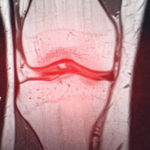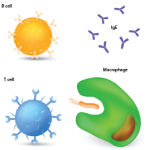 ACR CONVERGENCE 2020—Bulk cell analyses, common in medical research, can mask biologically and pathologically important information, making it difficult to distinguish between a universal response and a selective response. Bulk cell analyses can also make it difficult to distinguish between a differential change in a cell and an altered cell proportion. To make things even more complicated, even the definition of cell type is rapidly evolving, and increasingly depends on a cell’s molecular features as defined by the multi-omics: genome, epigenome, transcriptome and proteome. As cell biology evolves, so too does the need for a detailed understanding of single cells. This information can be used to answer innovative scientific questions, evaluate clinically important tissues and benchmark patterns in healthy tissues.1
ACR CONVERGENCE 2020—Bulk cell analyses, common in medical research, can mask biologically and pathologically important information, making it difficult to distinguish between a universal response and a selective response. Bulk cell analyses can also make it difficult to distinguish between a differential change in a cell and an altered cell proportion. To make things even more complicated, even the definition of cell type is rapidly evolving, and increasingly depends on a cell’s molecular features as defined by the multi-omics: genome, epigenome, transcriptome and proteome. As cell biology evolves, so too does the need for a detailed understanding of single cells. This information can be used to answer innovative scientific questions, evaluate clinically important tissues and benchmark patterns in healthy tissues.1
6 Single-Cell Technologies
On Friday, Nov. 6, at ACR Convergence 2020, Alex Kuo, PhD, senior scientist at Stanford University School of Medicine, California, described six single-cell technologies that are relatively mature and can be used for rheumatic disease research. “The exciting part of living in 2020 is that we now have a great selection of tools in our toolbox,” he said. These technologies are complementary with conventional immunology and molecular biology methods, and allow for new biological insights as well as the generation of new hypotheses. The new single-cell technologies are:
- Rapidly developing single-cell RNA sequencing (scRNA-seq);
- Cellular indexing of transcriptomes and epitopes by sequencing (CITE-seq) and RNA expression and protein sequencing assay (REAP-seq) for integrative protein and transcriptome analyses of single cells;
- Assay for transposase-accessible chromatin using sequencing (ATAC-seq) maps for chromatin dynamic maps of single cells;
- Mass cytometry (cytometry by time-of-flight) for highly multiplexed single-cell proteomic analysis;
- Imaging mass cytometry for highly multiplexed imaging with subcellular resolution; and
- Epigenetic landscape profiling using cytometry by time-of-flight (EpiTOF).
The first technology, single-cell RNA sequencing, uses single-cell capture, reverse transcription and complementary DNA amplification for input into sequencing systems. It allows for breadth, as well as depth, of cell analysis and can be used to determine the nature of biological samples. For example, scRNA-seq analysis has provided insight into the resident immune cells in the kidneys of patients with lupus nephritis, a condition that affects 40–70% of patients with systemic lupus erythematosus (SLE).2 Investigators used the technique to identify leukocytes that infiltrated the kidney and determined their functional state. In the same study, the researchers demonstrated the in-tissue differentiation of monocytes and macrophages, as well as broad expression of two chemokine receptors, CXCR4 and CX3CR1, implying a central role in cell trafficking. These findings demonstrate how scRNA-seq can be a powerful tool for rheumatic disease research, allowing for data that can be paired with antigen receptor sequencing.
Dr. Kuo briefly touched on CITE-sq and REAP-seq, and then turned his attention to scATAC-seq, a technique that can be used to map the chromatin dynamics of single cells. It allows for integrative multi-omic characterization of single cells to reveal molecular dysregulation in pathologic conditions, making it possible to compare a healthy state to a disease state.
Dr. Kuo explained that the fourth technique, mass cytometry, can be used for highly multiplexed single-cell proteomic analysis and is a powerful tool for rheumatic disease research. Likewise, imaging mass cytometry enables highly multiplexed imaging with subcellular resolution. The technique does not require harsh tissue dissociation and thus makes it possible to visualize the spatial relationship between single cells. Even though investigators most frequently analyze 32 parameters during imaging mass cytometry, it is possible to analyze more than 100 parameters.
Dr. Kuo then described EpiTOF, a technique that makes it possible to determine single-cell heterogeneity in histone modifications. This epigenetic variability is indicative of distinct hematopoietic lineage and/or functional state. He presented his unpublished research using EpiTOF to analyze samples from patients with systemic juvenile idiopathic arthritis (sJIA), a group that is at a higher risk of developing macrophage activation syndrome. His team found that the monocytes from patients with sJIA have repressed H3ΔN relative to healthy controls. They then discovered that not only does interleukin 6 (IL-6) blockade reverse H3ΔN repression in these monocytes, but that patients on tocilizumab, the anti-IL-6 receptor monoclonal antibody, show no decrease in H3ΔN in monocytes. Consistent with these findings, they documented that treatment of monocytes from healthy individuals with IL-6 was sufficient to induce H3ΔN repression, suggesting that IL-6 promotes macrophage differentiation in sJIA, in part through an epigenetic mechanism.
Public-Private Partnerships
Although single-cell analyses offer many insights, they, unfortunately, can be complex, requiring a combination of clinical expertise and technological expertise. The research team must come together to collect clinical samples, select the technology, perform computational analysis and interpret the data. Moreover, when planning experiments, the research team must thoroughly think through the variables involved, the sample size, the need for paired tissue samples and the importance of longitudinally collected samples.
In most cases, the requirements for single-cell analyses require public-private partnerships because they are beyond any one university’s research capacity. Perhaps the most well known of these partnerships is the Accelerating Medicines Partnership (AMP), comprising the National Institutes of Health, the biopharmaceutical industry and nonprofits, which was formed to facilitate a better understanding of single-cell contributions to rheumatoid arthritis (RA) and SLE. This effort has already proved successful, and single-cell analyses supported by AMP have revealed new insights into RA and SLE pathophysiology.
Lara C. Pullen, PhD, is a medical writer based in the Chicago area.
References
- Pullen LC. Human cell atlas poised to transform our understanding of organs. Am J Transplant. 2018 Jan;18(1):1–2.
- Arazi A, Rao DA, Berthier CC, et al. The immune cell landscape in kidneys of patients with lupus nephritis. Nat Immunol. 2019 Jul;20(7):902–914.



